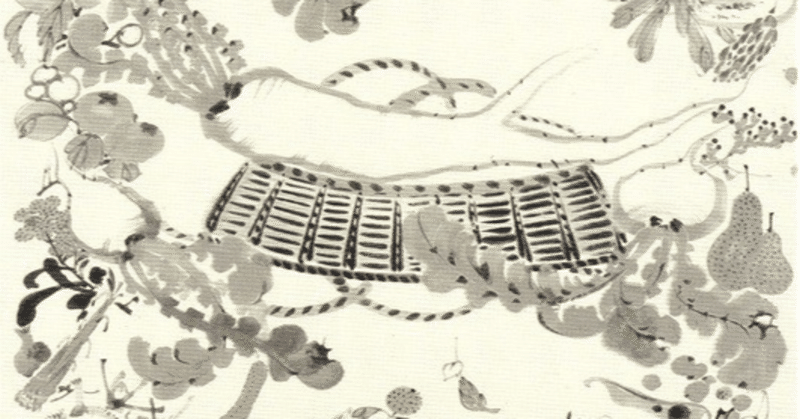
#10 Developing Unconventional Thinking
from
2021.07.12 Weekly Medical Journal (Resident Issue): No. 3428
This time's masterpiece is a Buddhist painting, an "unconventional" and unique ink-and-water painting modeled on the composition of the Nirvana painting, which depicts the death of Buddha. The radish in the center represents Shakyamuni, and the various vegetables and fruits surrounding it represent Bodhisattvas, arhats, animals, and birds mourning Shakyamuni's death. The corn growing high at the top means the Shara Twin Trees.

By "seeing," we create new value.
In the medical field, the word "assess" is often used as an act of assessment, such as evaluation and diagnosis. On the other hand, since ancient times, it has also meant a technique of artistic expression that expresses something by comparing it to other phenomena.


Let's train our imagination with art that has no correct interpretation.
Art is an excellent material for developing the power of perception and, by extension, imagination. In many cases, things around us have already been assigned precise meanings and definitions (also called "common sense"), and it takes a lot of courage to discover new values. In art, however, we are not constrained by conventional wisdom and can freely assign meanings and interpretations independent of the facts depicted or the artist's intentions. As I mentioned in the first article of this series, there is "no correct interpretation" in art.
Through the appreciation of art, we can accumulate the practice of "seeing" without being bound by existing meanings, which improves the flexibility of the mind, which is the base of imagination. Imagination is not something that is completed with materials. Instead, it is essential to have a "head for fun," which tries to connect seemingly unconnected things to the material. And developing imagination can be instrumental in the clinical setting.
Unconventional support is also essential at times.
Patients with illnesses often face restrictions on their behavior, diet, and relationships. Often, life activities that they have enjoyed for so long are prohibited. We cannot truly heal patients by providing reasonable, efficient, but rigid, conventional medical care and related topics without being imaginative about such circumstances. This is when we need to use our imagination, honed through the process of "seeing. For example, the patient's tone of voice may suggest the patient's hometown, or a carefully crafted handmade bag may suggest their sewing hobby. Many people are looking for a little "warm interaction" during outpatient visits and rounds that are not limited to discussions of illness and health.
Accumulate vivid and colorful experiences by using your eyes and mind in the field. Add a touch of fun to patients' days by using unconventional imagination and sometimes making fun of them. I believe that these things are required of medical professionals who support patients suffering from illnesses.
A masterpiece of this time: Kasonehansu (Reclining Nirvana of Fruits and Vegetables) (Jakuchu Ito)
from
まだまだコンテンツも未熟ですが応援して頂けるとすっごい励みになります!
